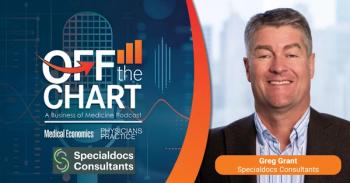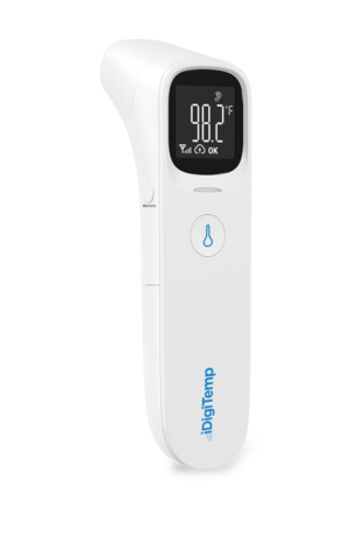
Cardiosense wins FDA Clearance for wearable heart monitor, CardioTag
Key Takeaways
- CardioTag is the first wearable to collect ECG, PPG, and SCG signals, enhancing cardiac monitoring capabilities.
- FDA clearance allows CardioTag to measure SCG, ECG, and PPG signals, providing insights into cardiac mechanics and hemodynamics.
Cardiosense's CardioTag gains FDA clearance, advancing cardiac monitoring with wearable technology for personalized, noninvasive heart health insights.
Medical AI company Cardiosense announced it has received 510(k) clearance from the U.S. Food and Drug Administration for its CardioTag device, a wearable sensor designed to provide a more comprehensive, noninvasive view of cardiac function.
The CardioTag is the first wearable to simultaneously collect electrocardiogram (ECG), photoplethysmogram (PPG), and seismocardiogram (SCG) signals. It enables clinicians to monitor not only heart rhythm but also mechanical and hemodynamic function, opening the door to more personalized and accurate care across settings.
“Our team is thrilled to achieve this critical milestone as part of our mission to advance cardiac care,” said Amit Gupta, co-founder and CEO of Cardiosense. “Traditionally, noninvasive cardiac monitoring has primarily focused on ECG and rhythm analysis. With the CardioTag device, we are adding an entirely new dimension by also capturing physiological data on cardiac mechanics and blood flow, providing unprecedented visibility into a patient’s cardiac function, hemodynamics, and volume status.”
The FDA’s clearance allows CardioTag to be used for measuring SCG, ECG, and PPG signals, along with heart rate and pulse rate. SCG is a technique that measures small vibrations on the chest wall caused by cardiac mechanical activity. Cardiosense’s studies show that combining SCG with ECG and PPG allows accurate assessments of cardiac timing intervals, such as left ventricular ejection time (LVET), a key indicator of how well the heart is pumping.
Cardiosense plans to begin pilot programs pairing the device with AI algorithms built on the physiological signals the CardioTag collects.
“The CardioTag clearance marks a pivotal step toward clinical adoption and broader access to pressure-guided treatment,” said Andrew Carek, co-founder and CTO. “We’re excited for the foundational role that the CardioTag device will play in building a noninvasive cardiac AI platform, as the signals it collects provide a rich data input upon which AI models for cardiovascular parameters can be developed, such as our pulmonary capillary wedge pressure algorithm.”
A recent multicenter study published in JACC: Heart Failure and presented at the American Heart Association’s 2024 Scientific Sessions showed that Cardiosense’s PCWP AI algorithm, which received Breakthrough Device designation, could estimate pressure values in heart failure patients with reduced ejection fraction as accurately as implantable hemodynamic monitors.
“This is a deeply meaningful milestone,” said Omer Inan, Ph.D., co-founder and chief scientific officer. “For over a decade, we’ve worked to turn a bold idea into a clinically reliable, noninvasive technology that truly meets patients where they are. With FDA clearance, we’re taking a major step toward bringing precision hemodynamic insights into everyday patient care—no matter the setting.”
AI and wearables are reshaping cardiovascular care
The FDA clearance of Cardiosense’s CardioTag underscores a
Wearables are no longer just step counters or fitness trackers. Devices like CardioTag, and others under development, now offer clinically relevant insights into heart function—tracking electrical signals, blood flow dynamics, and even chest wall vibrations. Combined with machine learning, this stream of data allows physicians to detect early signs of heart failure, monitor fluid overload, or anticipate decompensation days before it would traditionally be noticed.
Seismocardiography has emerged as a promising frontier. By measuring the micromovements of the chest due to cardiac contractions, SCG offers a window into the heart’s mechanical efficiency—something that was previously only measurable using invasive catheters or implantable sensors.
Meanwhile, AI continues to push the boundaries of
As remote care and hospital-at-home models gain traction, the ability to continuously assess cardiac health without the need for hospitalization could play a major role in managing chronic disease, reducing readmissions, and improving patient outcomes. FDA clearances like the one granted to CardioTag are expected to accelerate this shift, bringing sophisticated cardiac monitoring into everyday settings—from clinics to living rooms.
Newsletter
Stay informed and empowered with Medical Economics enewsletter, delivering expert insights, financial strategies, practice management tips and technology trends — tailored for today’s physicians.








